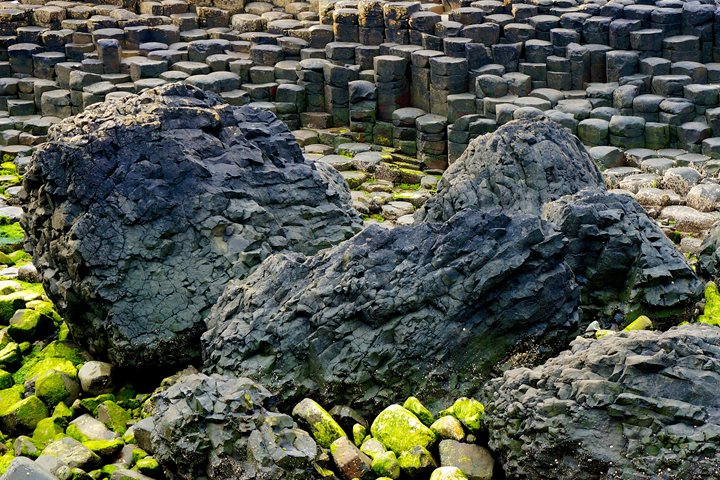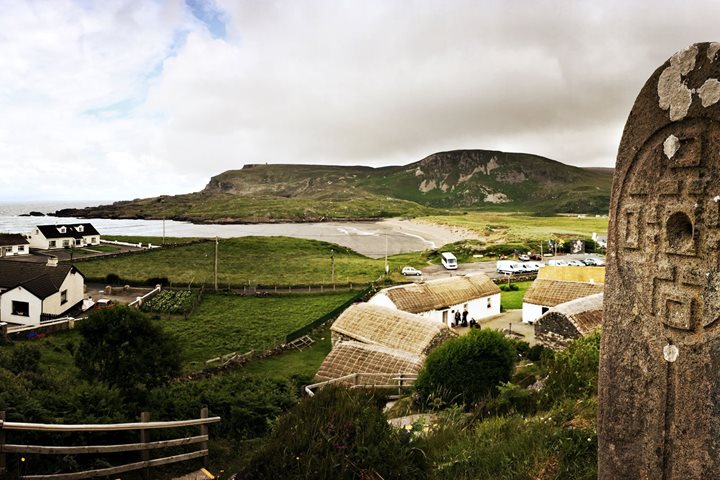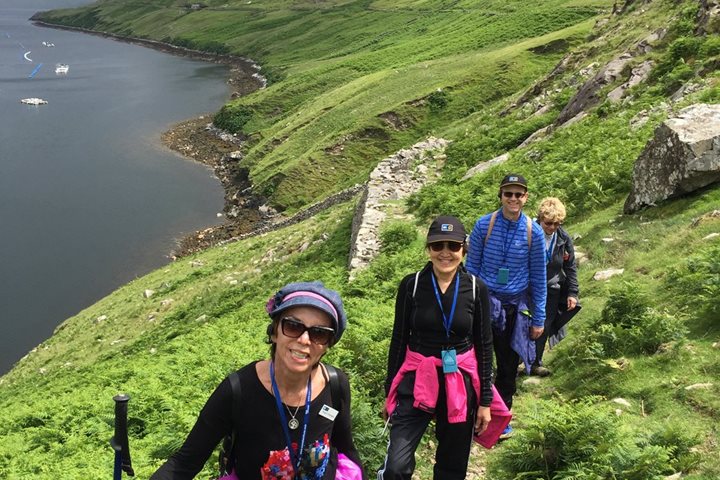When we disembarked this morning in Portrush, Northern Ireland, there were subtle changes in harbor architecture noting our departure from the colorful ports of Dingle and Kinsale and the south. Locals out walking their dogs on a Saturday morning around the lush dock gardens welcomed us and inquired where we had come from. One man pointed to partially hidden stairs cut into the old dock stone where villagers lowered themselves into the boats bound for America.
For the hikers, our short drive to Dunservick passed through the town of Bushmill, home of the oldest licensed distillery (1624) in Ireland, where the other part of our group would spend time enjoying a tasting and tour. “Bush” is actually the name of the river here, which still is fished for salmon and the old mill stands near the edge of town. The village was coming alive earlier than usual due to the much anticipated annual Salmon and Whiskey Festival today. Just outside of town we passed Dunluce Castle perched dramatically above the ocean.
Our hike began at Dunservick Head, following the well-trodden dirt “track” (marked hiking route) of the Causeway Coast Path of County Antrim which hugs the giant basalt sea cliffs with views of the isles and highlands of Scotland.
Walking through the landscape offered us direct insight into Northern Ireland and how remarkably different it was from where we had come from. There were no rock walls which had divided the properties, protected the animals, and challenged the strength of every landowner in the South. The fences here were Gorse hedges, as thick as formidable as the rock but green and thorny, blending in well with the landscape yet impermeable for sheep or humans. In the spring these vicious bushes explode with yellow flowers offering a patchwork of color across the fields.
The land itself is very different due to the climate created by the coastal winds and currents. At 55 degrees north, similar to Hudson Bay, has a warm current keeps the area temperate. A shorter but rich growing season changes the product offerings of the area. Grown here are potatoes, barley and originally flax, woven into the finest linen products exported to London and around the world. Sheep are not used for wool but for meat, and livestock are a strong source of income.
In the distance we see Rathlin Island, now a nature reserve. A massive axe factory dating back to 3500bc was found here. One feels the connection to Scotland which seems a stones’ throw away and shares much in terms of culture and history with this region.
Our walk of 4-5 miles opened up new views of basalt tower formations and hidden sand beaches. We crossed over several “kissing fences” which offered the opportunity for couples to turn back to the hiker behind to kiss before making it through the turnstile type opening. Orchids and a variety of wildflowers were just beginning to pop out on this splendid June morning.
The end of our hike was the UNESCO site of the Giant’s Causeway itself where we met the rest of our group walking along these surreal basalt stones.
Driving on to Belfast allowed guests to tour the impressive Titanic museum while others of us explored the heart of Belfast with a visit to St. Georges Market to taste a variety of local scones, meet wool and jewelry artisans, and photograph some of the fresh catch and harvests of the day before boarding National Geographic Orion for our last sail to Dublin.







